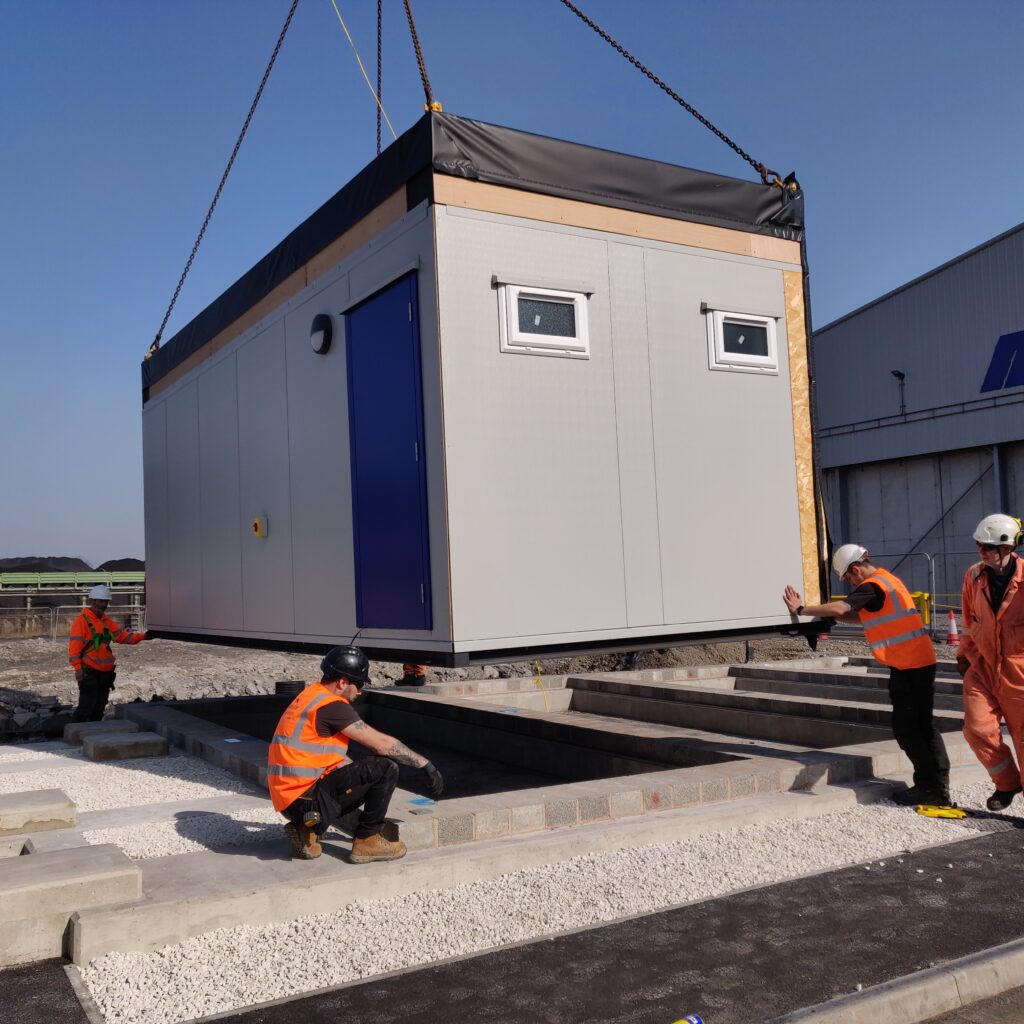Navigating the world of construction can be complex, especially when it comes to understanding planning requirements.
One of the most common questions that arises is whether planning permission is necessary for these structures. This is especially true when your building is only intended to be temporary.
In most cases, the answer is yes. So, to avoid getting caught out, you’ll want to prioritise it before any work begins.
We’ll unravel the intricacies of planning permission for modular buildings, providing you with the knowledge you need to ensure your project runs smoothly.
Do modular buildings follow different rules?
Modular buildings are different to traditional ones in a few ways. They are created using prefabricated sections called modules. These modules are built off-site in a factory and transported to the construction site. They are then assembled to form a building.
Similarly, portable buildings (or portable cabins) are modules designed to be movable rather than permanently located
When it comes to planning permission, modular buildings follow the same rules as traditional construction. This means it will be required if the structure will be in place for a considerable amount of time, or it alters the property’s use or appearance.
Getting planning permission involves asking your Local Planning Authority (LPA) for approval to carry out certain work. They will then either grant or refuse permission based on a number of factors.
Who’s responsible for applying?
The individual, business, or organisation wanting to install the building is responsible for seeking planning permission from the site’s LPA.
If you need help figuring out where to start, your modular building manufacturer can offer guidance and support for navigating the planning process.

When planning permission may not be required
You will always need planning permission for modular construction that will be in place for longer than 28 days. This is especially true for those used for residential or commercial purposes.
However, the rules can be more forgiving around portable buildings that are only needed temporarily (less than 28 days).
Temporary portable buildings may not need planning permission if:
- They are an extension of an existing building and shorter in height.
- The portable building takes up less than 25% of the total area available on the site.
- The portable building is directly relevant to the purpose of the original structure.
When planning permission is required
Outside of the situations above, you will generally need permission when:
- The building is greater than 25% of the total area available on your site.
- The building is closer than 5m to the boundary of your site.
- The building significantly reduces the amount of parking space or vehicle access on the site.
- You intend to change the use of your building (e.g. from residential to commercial).
Before you submit
If you’re feeling unsure, there are a couple of things you can do before submitting your full application.
For a fee, you can schedule an informal discussion with your Local Planning Authority to review your project plans. They can offer advice about:
- Whether or not you need planning permission.
- Which forms to use and if you have filled them in correctly.
- If the alterations you are proposing need listed building consent.
However, they cannot tell you if your proposal will be accepted.
A lot of LPAs also offer ‘pre-application planning advice’. These incur a more significant fee. However, it decreases the chance of submitting an unacceptable or incorrect application. This service can offer you:
- An early indication of whether your plans will get approved.
- A site visit by a case officer and follow-up advice in writing.
- Early identification of any issues that must be addressed before submitting a formal planning application.
- Specialist guidance on landscaping, visual impact, ecology, trees and conservation.

Applying
So, you’ve discovered that you need planning permission for your project. What should you do next? When applying, there are a few things to keep in mind.
Cost
The full planning application fee for a new commercial modular building will vary depending on the size of the project. Costs will also range depending on where in the UK you are, so always check with your LPA.
Additionally, you should be mindful that your application may need to be accompanied by architects plans and other reports. These incur their own fees. Therefore, budgeting accordingly will be crucial to the process.
Your modular building provider will be able to help with any questions relating to your projects scope and size.
What do I need to include in the application?
Generally, you’ll need to include the following documents in your application:
- Your application form.
- A signed ownership certificate.
- An agricultural holdings certificate.
- The correct application fee.
- A location plan showing any named roads and surrounding buildings.
- A detailed site plan.
- Existing and proposed elevation plans, floor plans and roof plans.
- A design and access plan (DAS). This is a short report that accompanies your planning application. It should explain and justify the design and access arrangements of your proposal.
Again, check with your Local Planning Authority, as different types of structures require different bits of information.
Hearing back
It usually takes between 8-12 weeks to hear back after your submission. For more complex, detailed applications, it could be longer.
Choose Excel Modular for a smooth building process
Navigating planning permissions can be time-consuming and complicated. However, when you’re working with a knowledgeable building partner, this should lessen any issues.
At Excel Modular, we have over 40 years of experience supplying modular buildings to the UK from our Hull, East Yorkshire site. We’ve worked with schools, hospitals, manufacturing sites and leisure facilities to create perfect bespoke buildings.
While most of the planning permission process will be between you and your LPA, we are here to assist with any questions you may have. You can rest assured that after your application, the construction element of your project will run as smoothly as possible.
Speak to our team today to find out how we can help with your project.



